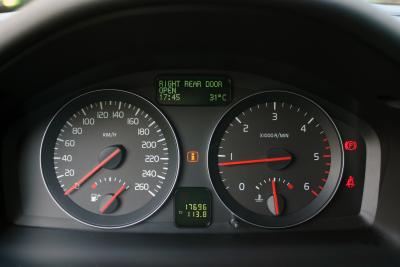If you’ve ever been pulled over when your speedometer reads one thing and an officer’s radar gun reads another, then you already know this truth: Changing the size of your tires throws the reading of your speedometer off. Most automobile speedometers are calibrated based on the speed of the transmission and the revolutions per mile of a specific size tire. But if you can figure out how much faster you are traveling than your car thinks you are, you can calculate your speed based on your speedometer reading.

Measure your old tire size (A). This is the standard-size tire placed on the vehicle by the manufacturer.

Measure your new tire size (B).

Divide the larger number by the smaller number (A/B=C or B/A=C).

Take a reading from your speedometer (S). Figure out the increase or decrease in speed by dividing that number by the answer from step 3 (S/C=N). For example, if your speedometer reads that you are traveling 100 miles per hour, and C=500 (5 percent bigger) then 100/500 =5 miles per hour faster.

Add N back to S for your new total (N+S=T). In other words, 100 + 5 = 105 miles per hour.
